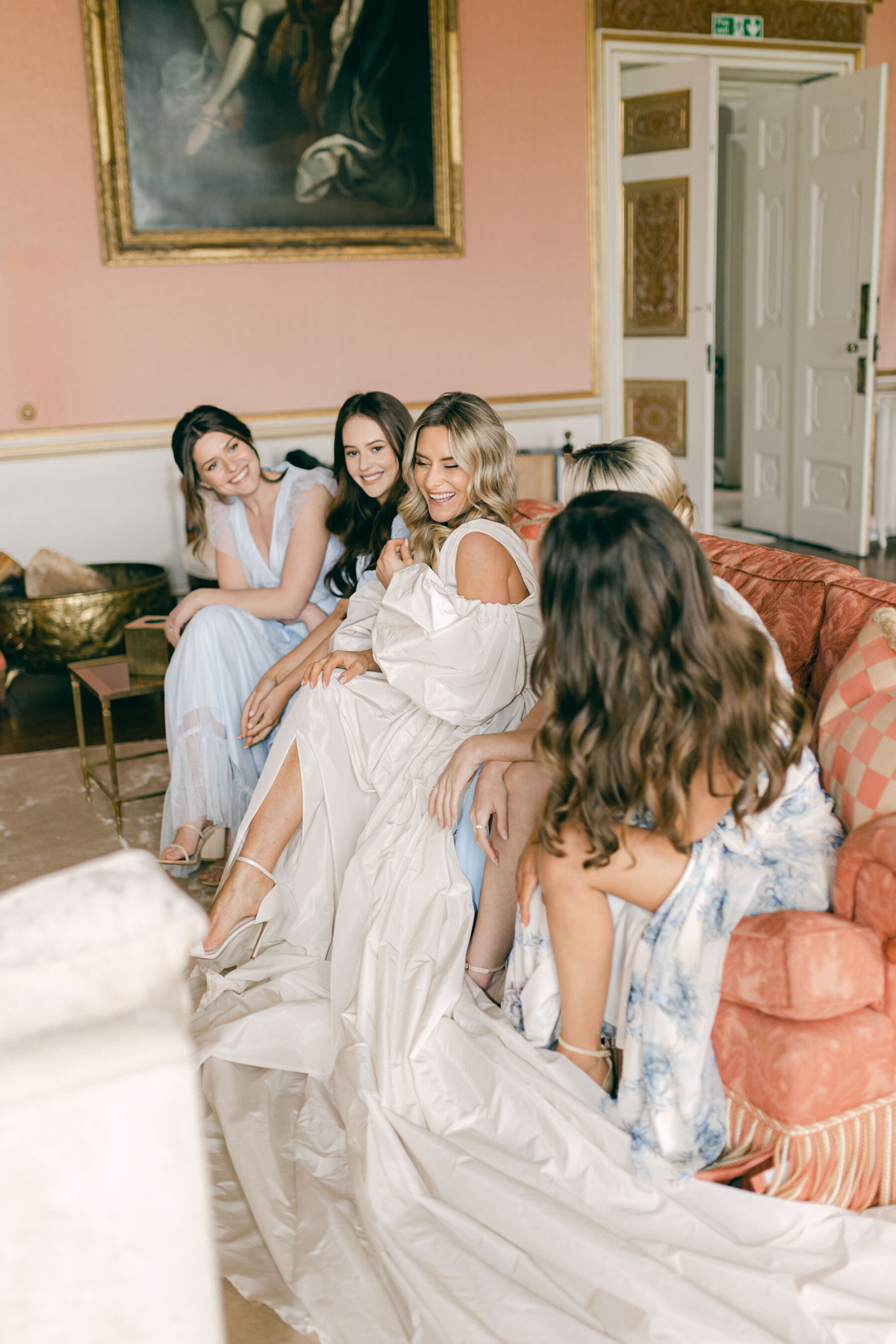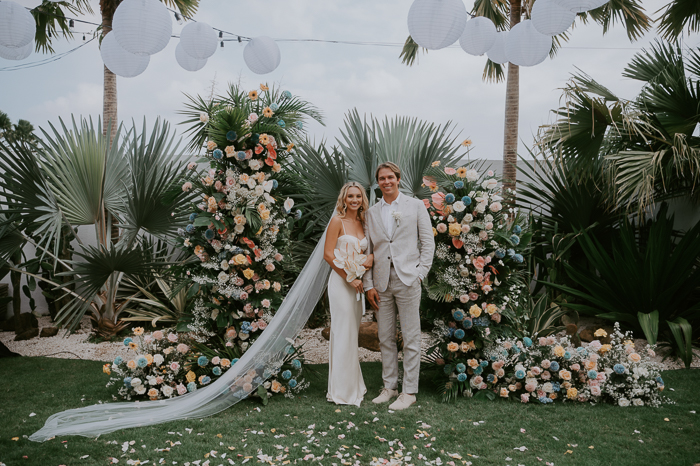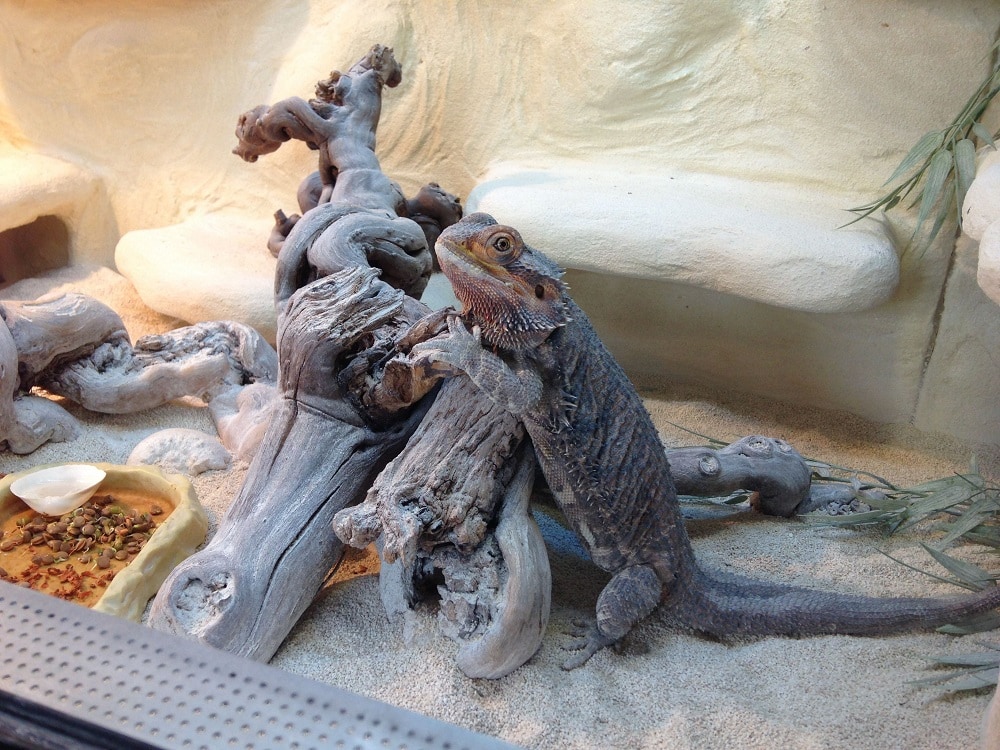
Bearded dragons make fantastic pets, and they are getting more popular every year. It’s a hardy animal that can live up to 10 years if properly maintained and requires little other than a clean, warm tank and food. If you have just purchased your first bearded dragon, you might have a lot of questions about setting up its habitat, especially in regards to what type of sand to use. We have chosen seven of the most popular brands to review so you can see the difference between them. We’ll discuss the pros and cons of each and tell you about our experience using them. We’ve also included a short buyer’s guide where we discuss what makes sand suitable for bearded dragons.
Keep reading while we look at texture, fortifications, quantity, and other factors to help you make an educated purchase.
A Quick Comparison of Our Favorites
7 Best Sand for Bearded Dragons – Reviews 2021
1. Zoo Med Vita-Sand – Best Overall
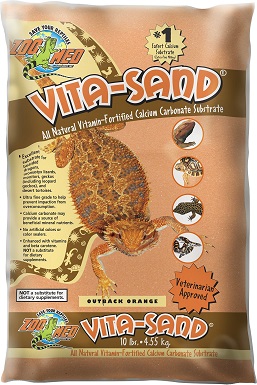
Zoo Med Vita-Sand is our pick for the best overall sand for bearded dragons. It’s a fortified calcium carbonate substrate that provides a perfect base for an adult beardie. It allows for increased calcium delivery which can be quite beneficial and it has other vitamins and beta carotene, which will also improve your pet’s health. The ultra-fine texture is soft on your pet’s feet, and there are no artificial colors that can stain your pet. Each bag contains 10 pounds of sand, which should be enough for many terrariums.
The only downside we experienced while using Zoo Med was that it could be dusty if your dragon likes to dig. This dust often got into our pet’s water bowl, so we had to change it frequently.
Pros
- All-natural substrate
- Increases calcium delivery
- Fortified with vitamins and beta carotene
- Ultra-fine texture
- No artificial colors
- 10 pounds
2. Aqua Terra Aquarium Sand – Best Value
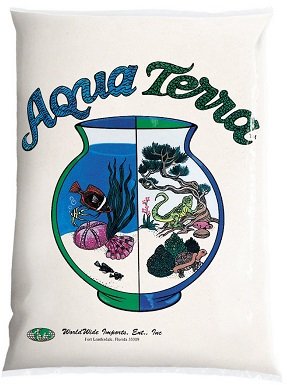
Aqua Terra Aquarium Sand is our choice for the best sand for bearded dragons for the money. It’s available in several colors, so you can make your terrarium highly decorative, and it’s 100% natural and won’t harm your pet in any way. The acrylic coating is also non-toxic and will not stain your pet’s skin. This product arrives in a 5-pound bag, so you may need more than one bag, depending on your set-up.
Our biggest problem with Aqua Terra is that it arrives in extremely flimsy packaging that is easy to puncture even with careful handling. Since the amount is small, you aren’t going to want to waste any.
Pros
- Multiple colors
- 5 pounds
- 100% natural
- Non-toxic
3. Carib Sea SCS00711 Reptiles Substrate Sand – Premium Choice
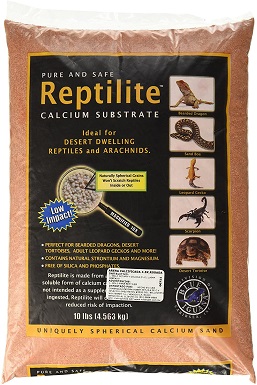
Carib Sea SCS00711 Reptiles Substrate Sand is our premium choice sand for bearded dragons. This brand is very attractive with a desert rose color that is a nice change from the typical sand. Each grain is naturally spherical to its softer on your pet’s feet and provides a more comfortable place to rest. There are no harmful silicates or phosphates, and we found it creates very little dust. Each package contains 10 pounds of sand.
The primary downside we experienced while using Carib Sea was that some of the color would transfer to our hands, and we would also see it on our bearded dragon when it spent a lot of time basking on the substrate.
Pros
- Calcium substrate
- Naturally spherical grains
- It contains strontium and magnesium
- Free of silica and phosphates
- 10 pounds
- Desert rose color
Cons
- Color can wear off on you and your pet
4. Fluker’s 37005 Natural Reptile Sand
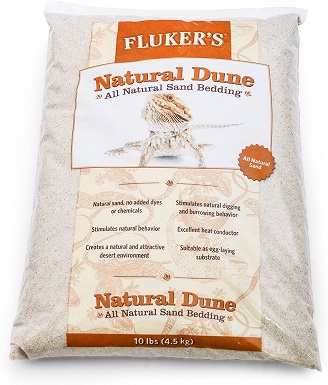
Fluker’s 37005 Natural Reptile Sand is a naturally colored sand that will provide your pet with a desert-like environment. There are no dyes or chemicals that can transfer to your pet’s skin, and we found this sand to create very little dust. Each bag contains 10 pounds of sand, so you will need fewer bags to fill your tank.
We enjoyed using Fluker’s 37005 and liked that it doesn’t create a lot of dust. However, the bag is quite flimsy and easily punctured with your fingers.
Pros
- No dyes or chemicals
- Excellent heat conductor
- 10 pounds
- Low dust
5. Exo Terra PT3101 Desert Sand
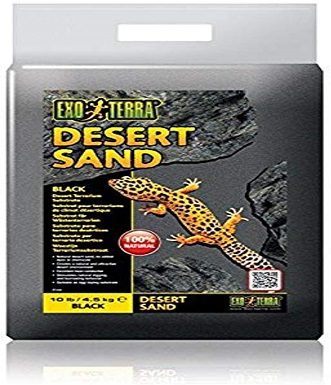
Exo Terra PT3101 Desert Sand is another sand that features a natural appearance with no added chemicals or dyes. It’s sifted to help remove impurities and reduce the amount of dust present in the bag. It’s an excellent heat conductor, so it will provide your pet with a consistent temperature without hot or cold spots. This product comes in a 10-pound bag, so you should only need a few for most habitats.
We used Exo Terra several times, and it’s a good choice if it is all you can find. We don’t like the flimsy packaging it uses, and we’ve spilled more than one bag on our floor. It’s also a little dusty despite the extra sifting that takes place at the plant.
Pros
- Natural appearance
- Sifted to remove impurities
- Excellent heat conductor
- 10-pound bag
6. Reptile Sciences 81110 Terrarium Sand
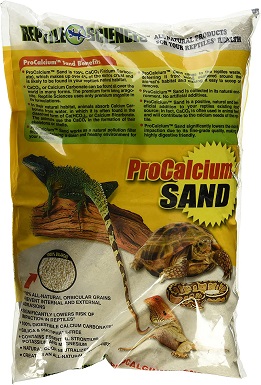
Reptile Sciences 81110 Terrarium Sand uses 100% digestible calcium carbonate. It’s fine sand, so it reduces the risk of impaction, and the naturally orbicular grains are softer on your pet’s feet and more comfortable. It also contains strontium, potassium, and magnesium, which can help improve your pet’s health. Calcium carbonate is also a good odor reducer.
Unfortunately, Reptile Sciences 81110 is another brand with poor packaging that can cause sand to wind up on your floor before getting it in the habitat. We also found it to be a little dustier than some of the other brands, and the dust would get into the water bowl and coat the food.
Pros
- 100% digestible calcium carbonate
- All-natural orbicular grains
- Reduces the risk of impaction
- It contains strontium, potassium, and magnesium
- Natural odor reduction
7. Zoo Med 976803 ReptiSand
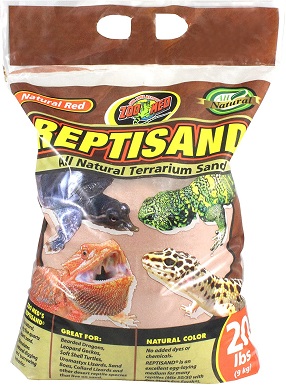
Zoo Med 976803 ReptiSand is an attractive substrate with a pinkish salmon color that our bearded dragon liked quite a bit. There are no artificial colors or dyes, so the color won’t get on your hands as you work with it. It’s an excellent heat conductor, so it will help maintain an even temperature across the surface. There is also naturally occurring calcium that your pet can absorb for health benefits. The 20-pound bag is the largest size on this list, so you won’t need many to fill your tank.
The downside to Zoo Med 976803 is that it contains a lot of dirt and is quite dusty. It also varies in quality, and the two bags we ordered were different when they arrived, with one having a noticeably higher level of dirt. Even though you get a large amount, it seems expensive and doesn’t seem to cover as much area as the other brands.
Pros
- Natural color
- No artificial dyes
- Excellent heat conductor
- 20 pounds
- Contains calcium
Cons
- Dirty and dusty
- Expensive
- Varies in quality
Buyer’s Guide
Let’s look at a few things you should consider when choosing sand for bearded dragons.
Is Sand Substrate Safe for My Bearded Dragon?
Many experts will advise against using sand as a substrate for bearded dragons because it can lead to a condition called impaction.
What Is Impaction?
Impaction is the result of a solid or semi-solid mass blocking the digestive system. Bearded dragons, especially juveniles, can eat the sand along with their meal, which can lead to an obstruction. Some pets will also lick the sand or ingest it while they dig, so if you notice this behavior, you will need to consider another substrate option. Most owners that use a sand substrate feed their bearded dragon in a different location to prevent it from eating the sand along with its meal.
Why Should I Choose a Sand Substrate?
Most owners that use a sand substrate do so because it is the closest to the bearded dragon’s natural environment. Your pet will like to dig, hide, and play in the sand. If you have a sandy area in your terrarium, it’s likely your dragon will spend most of its time there.GZcalcium it needs because the sand contains naturally occurring calcium that your pet will absorb through the skin. Calcium is important to help prevent the onset of a condition called metabolic bone disease (MBD). Metabolic bone disease can cause the bones of your pet to become soft, affecting mobility. If left untreated, MBD can lead to death, and even with treatment, recovery can be a long process.
Calcium sand (calcium carbonate) is the best choice when choosing a sand substrate, and we tried to point out brands that use this ingredient in our reviews.
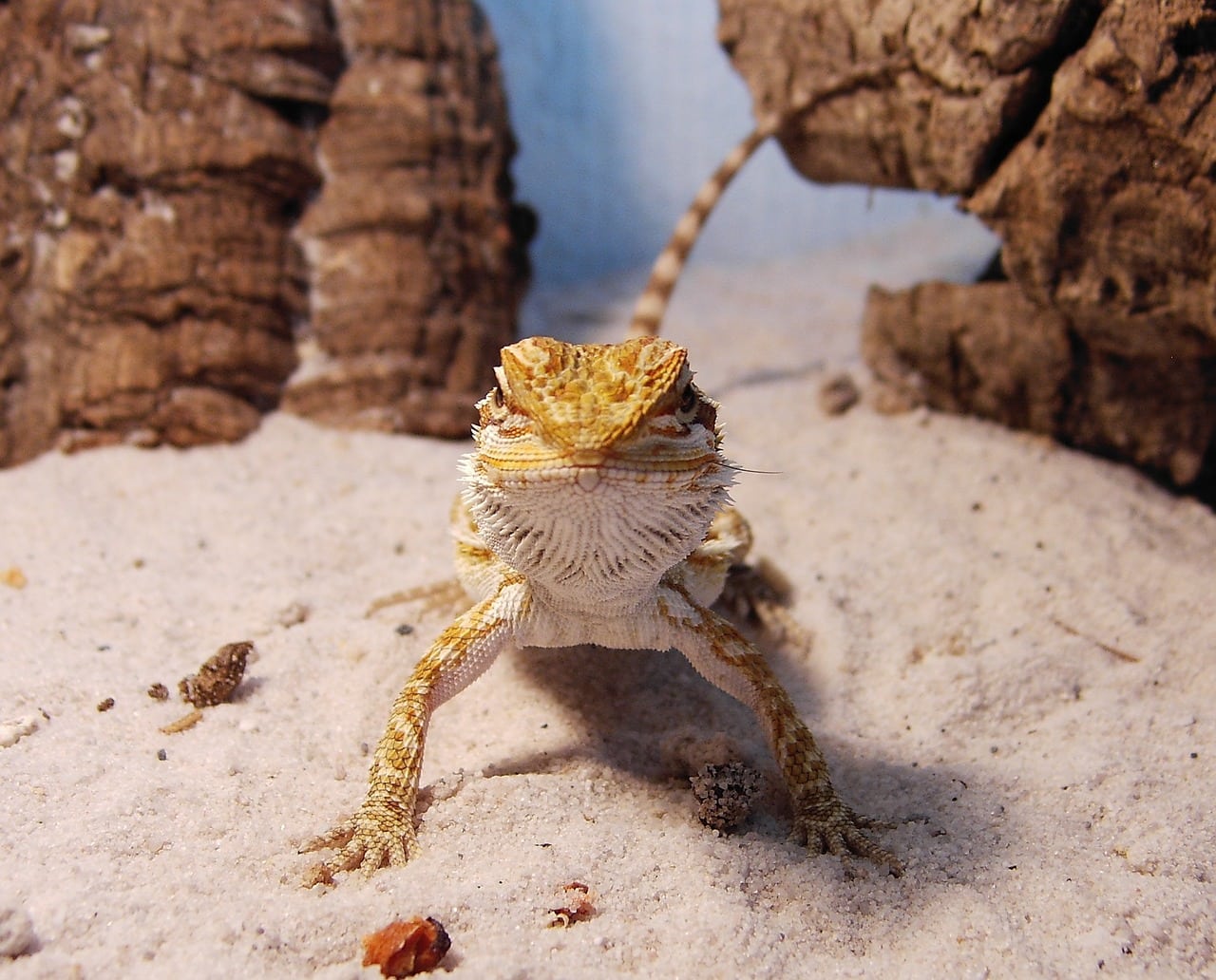
How Much Sand Do I Need?
Baby Bearded Dragons
Baby bearded dragons require a 20-gallon tank, and we recommend avoiding a sand substrate because juvenile dragons are messy eaters that can eat a lot of sand while learning how to consume their food. It’s best to keep the sand for the adult habitat.
Adult Bearded Dragons
An adult bearded dragon usually requires a 40-gallon tank. Most experts recommend following the rule of 1–2 pounds of substrate per one gallon of tank space. Therefore, a 40-gallon tank will need 40 to 80 pounds of sand. This much sand should result in 1–2 inches in the tank, providing your pet with plenty of room to dig.
What Should I Avoid When Choosing a Sand Substrate?
Dust
Dust is probably the biggest concern when choosing a sand substrate. Many brands can be quite dusty, and it can get into the food and the water. It will also get on the glass and can even escape the habitat into your home. We tried to point out any brands that were especially dusty in our reviews.
Dyes
Many brands dye the sand multiple colors to make it more attractive to buyers, but some of these dyes can be toxic, and many of them can rub off onto your pet, causing it to have discolored skin. If you notice the color leeching onto your hands, the glass, or onto your pet, you should choose a different brand. We tried to point out any brands that could cause discoloration in our reviews.
Silicates
You can find silicates in many types of stone, and it’s also present in several kinds of sand, including brown construction sand and pool sand. Silicates can lead to lung problems in all animals, including humans.
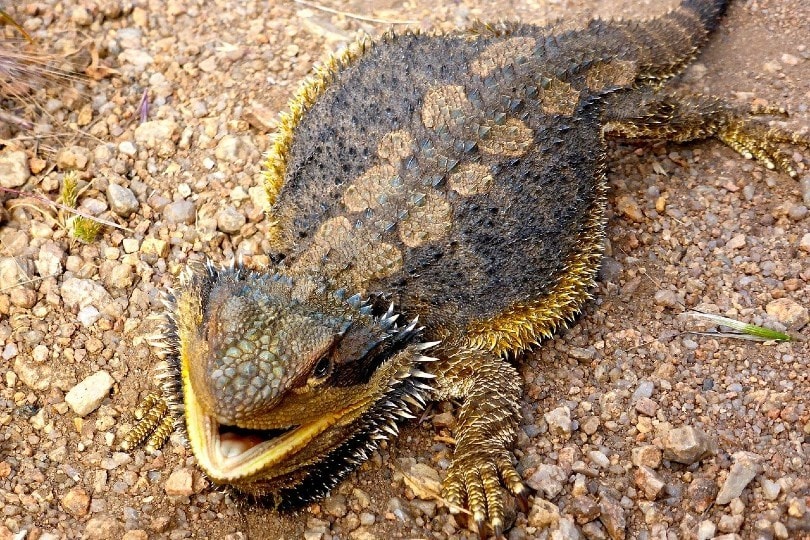
What Can I Use Instead of Sand?
Many bearded dragon owners choose to avoid particulate substrates like sand and newspaper and go with a solid option instead. The primary downside to solid flooring is that it’s usually not as effective at reducing odor, and it doesn’t allow your pet to dig.
Terrarium Carpet
A terrarium carpet is a great choice for a solid substrate in your tank. It uses all recycled materials and is soft and highly absorbent. It’s also easy to clean and made in the USA. This option is our top choice for terrariums that don’t use sand.
Tiles
Ordinary bathroom tiles can make an excellent floor for your bearded dragon’s terrarium. Our pets seem to enjoy this surface, and it’s extremely easy to clean.
Rubber Shelf Liner
Rubber shelf liner is inexpensive and easy to find. You can clean it easily, and you will only need a pair of scissors to fit it in your habitat. It’s durable enough to last for several years, and it’s soft on your pet’s feet.
Clay Substrate
You might have heard clay substrate called excavator clay. This product allows you to form tunnels, is highly absorbent, and will allow your pet to dig. However, you might require more than usual due to the three-dimensional aspect.
Newspaper
Many owners also like to use newspaper or paper towels as a substrate for their bearded dragon. These options have many benefits, including an extremely low cost. However, you will need to change this substrate much more frequently than the other types, so you will be paying for it with your time.
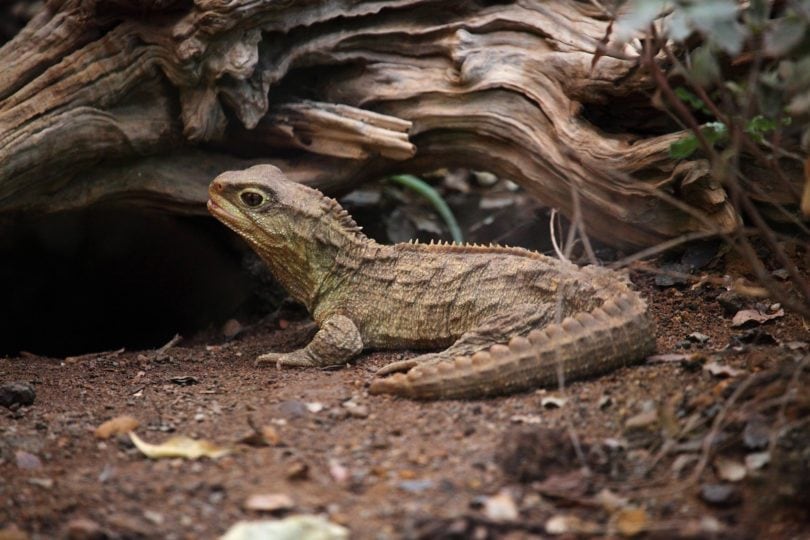
What Substrates Should I Avoid?
- Crushed Walnuts — Walnuts can irritate your pet’s eyes and nose. It can also have sharp edges that can cut skin.
- Wood Chips — Many types of wood can cause an allergic reaction in your bearded dragon.
- Millet Substrate — Millet gets moldy, and it can also lead to impaction.
Conclusion
When choosing a sand substrate for your terrarium, we highly recommend our best overall pick. Zoo Med Vita-Sand is all-natural, contains calcium, and has vitamin and mineral fortification. It comes in a large bag, and the ultra-fine texture reduces the risk of impaction. Another smart choice is our pick for the best value. Aqua Terra Aquarium Sand is available in multiple colors so you can create an attractive environment. The low-cost sand is non-toxic and produces no dust. Our bearded dragons seemed to enjoy it and would spend most of the day digging around in it. We also recommend checking out our solid flooring options as some of those, like the terrarium carpet, will provide your pet with a safe flooring that’s easy to clean, especially if it doesn’t seem to be a digger.
We hope you have enjoyed reading over these reviews and found a few options you would like to try out. If we have helped you choose your next substrate, please share this guide to the best sand for bearded dragons on Facebook and Twitter.
Feaured Image Credit: CC0 Public Domain, Pxhere
Nicole is the proud mom of Baby, a Burmese cat and Rosa, a New Zealand Huntaway. A Canadian expat, Nicole now lives on a lush forest property with her Kiwi husband in New Zealand. She has a strong love for all animals of all shapes and sizes (and particularly loves a good interspecies friendship) and wants to share her animal knowledge and other experts’ knowledge with pet lovers across the globe.



